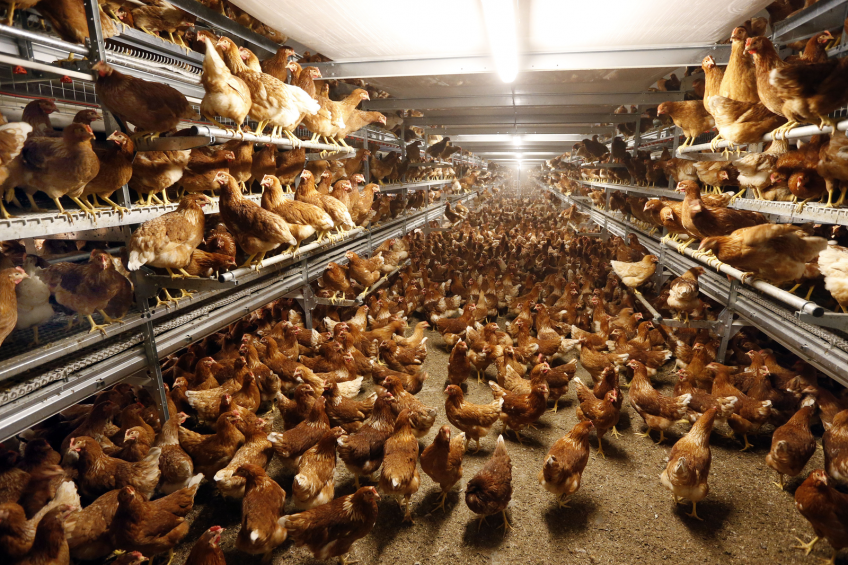Ventilation of broiler houses during hot weather

USPOULTRY and the USPOULTRY Foundation announce the completion of a funded research project at the University of Georgia in Athens, Ga., in which researchers studied the interaction of temperature, relative humidity and air velocity in influencing heat production by broilers in tunnel ventilated houses.
The project is part of the Association’s comprehensive research program encompassing all phases of poultry and egg production and processing.
Evaluate heat removal from tunnel ventilated broiler houses
The objective of the current study was to evaluate heat removal from tunnel ventilated broiler houses. This study used the commercial broiler house as a large calorimeter, which allowed bird heat production to be explored as a function of temperature, relative humidity (Rh) and air velocity. The total, sensible and latent bird heat production was measured in a number of houses with market age broilers.
Minimize heat stress during hot weather
Sensible heat loss, which results in an increase in house air temperature, is the heat dissipated by birds through heat transfer to the surrounding air. Latent heat loss is the heat lost from a bird through the evaporation of moisture from its respiratory system resulting in an increase in house humidity. Several trends in bird heat production/loss were observed, which can be used by growers and integrators to minimize heat stress during hot weather:
- During typical hot summer conditions, bird heat represents 97 percent of the total heat production in a broiler house. This confirms that there is little to gain by increasing house insulation above what is typically recommended since the majority of the heat is being produced by the birds.
- The total heat production per bird increased linearly with air speed for average air velocities between 350 and 525 ft/min. The roughly 30 percent increase in heat production is a result of the combination of increased bird weights and increased heat removal as air speeds increase.
- The total heat production, on average, was partitioned into 40Â percent sensible and 60 percent latent. This indicates that even in the presence of air velocities between 350 to 525 ft/min that market age birds lose the majority of the heat they produce through the evaporation of moisture from their respiratory system. It is important to note that a 40:60 ratio of heat production is normal for birds and does not necessarily mean the birds are panting.
- At high air velocities (450—550 ft/min) latent heat production/loss decreased rapidly between the temperatures of 75 to 85°F as Rh rose above 85 percent. Producers must be careful not to use evaporative cooling excessively even though it may result in lower house temperature, because bird heat loss can be adversely affected.
- The proportion between sensible and latent heat loss can vary with bird size, temperature, relative humidity and air velocity.
- For birds in the 4 lb. range and an air velocity of 600 ft/min, the ratio between sensible and latent heat production was closer to 50:50 than 40:60 (air temperature = 75 to 85 F). The higher proportion of sensible to latent heat production indicates that the combination of slightly higher air speed (600 vs 500 ft/min) and smaller bird size can lead to more effective bird cooling. Since a 50:50 ratio was not seen in any of the houses with larger birds, it can be surmised that larger birds (6 lbs+) could have possibly benefitted from higher wind speeds (> 525 ft/min).
- Temperatures below 75 F with air velocities of 600 ft/min were shown to result in excessive small bird (4 lb.) heat production, which could result in reduced bird performance.
- Total bird heat production varied diurnally (day/night). The amplitude of the diurnal variation was influenced by the lighting program and fan operation.
- Shorter day lengths resulted in a decrease in nighttime heat production and a corresponding increase in daytime heat production which could result in increased potential for bird heat stress.
- Increasing nighttime air velocity resulted in an increase in nighttime heat production and a corresponding decrease in daytime heat production. This in part could help to explain why other studies have shown increased bird performance during hot weather when high air speeds are maintained during the night.













